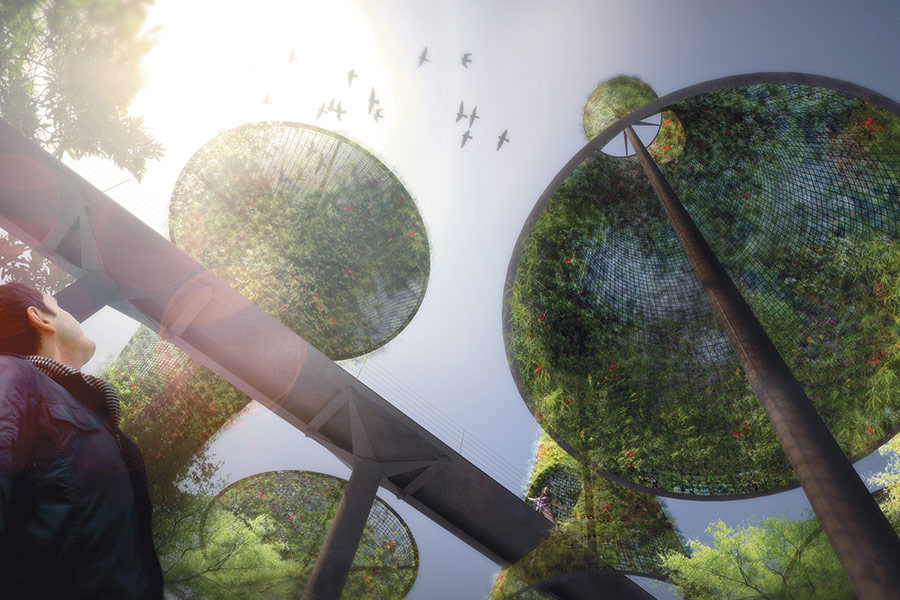
The Architecture League of New York has picked the winners of its annual Emerging Voices Awards. Each the year the League chooses eight practitioners from the United States, Canada, and Mexico through an invited, juried portfolio competition. This year’s winners include three firms from Mexico. The rest are based on the East Coast of the U.S. The winners will be giving lectures about their work in New York City throughout the month of March.
Studio Roberto Rovira
—
Miami, FL
When he enrolled in engineering school at Cornell on a Navy scholarship, Puerto Rico native Roberto Rovira had no idea he would end up practicing landscape architecture in Miami. After travelling the world on a Chilean tall boat and Navy tours in Tokyo and the Persian Gulf, Rovira by chance met a landscape architect travelling back to Paris for a semester at the Sorbonne. “This was the first time I had heard those two words put together—landscape and architecture. I filed it away,” said Rovira. Back stateside, he enrolled in graduate school at the Rhode Island School of Design, graduating in 1998 with a degree in the field.
Rovira started his eponymous studio in 2002 in San Francisco, relocating in 2005 to take a teaching position at Florida International University (FIU), where he now chairs the landscape architecture program. “Once I moved to Miami, I thought it was an opportunity to rethink the types of projects we did,” said Rovira. “The city itself is in a constant process of reinvention and remaking. You have a tropical palette and some remarkable architecture coming in line. It’s a really fertile environment to practice and think and to teach.”
|
FIU Skylounge, Miami.
Manuel Perez Trujillo
|
||||
Studio Roberto Rovira has completed a number of installations, such as the Sky Lounge, a seating oasis in the courtyard of a neglected 1970s Brutalist structure at FIU. Porous blue crushed glass—made from SKYY Vodka bottles—held in place with a matrix of circular PVC pipes solved a ponding issue from a leaky skylight. Circular benches align visitors’ views upward through concentric suspended nets covered in 3,000 air plants and beyond to the sky above. “One of the things that interests us is trying to do the most with the least,” said Rovira. “As a strategy, we seek to get to the root of these ideas and concepts that drive out design.” Rovira traced his interest in these tactical interventions to RISD, where he started a group called Guerilla Gardens in 1995, “before the word guerilla gardens became en vogue.”
|
Parque De las Flores, Colombia; The Ecological Atlas.
Courtesy Roberto Rovira
|
||
For a botanical garden concept at an abandoned coffee hacienda in Colombia, Rovira proposed uniting the site’s dramatic topography with an existing set of cisterns and canals that route water from a stream to coffee processing buildings. “The caretaker turns a valve and the entire building starts to churn and move,” said Rovira. He brought in his project for an Ecological Atlas as the centerpiece to an on-site museum celebrating local industry and botany. “Because it was a celebration of context and botany and because there would be research happening here, the museum should be a place where the science and art of botany exist on the same plane—all connected with water,” said Rovira.
|
Wynwood Greenhouse Park, Miami.
Azeez Bakare
|
||
Back in Miami, Rovira is working to complete a competition winning design for a new park in time for this year’s Art Basel. His design provides an overhead armature on which plants can grow. It hovers over a green open space that can handle events for Art Basel or serve as a contemplative garden on quieter days.